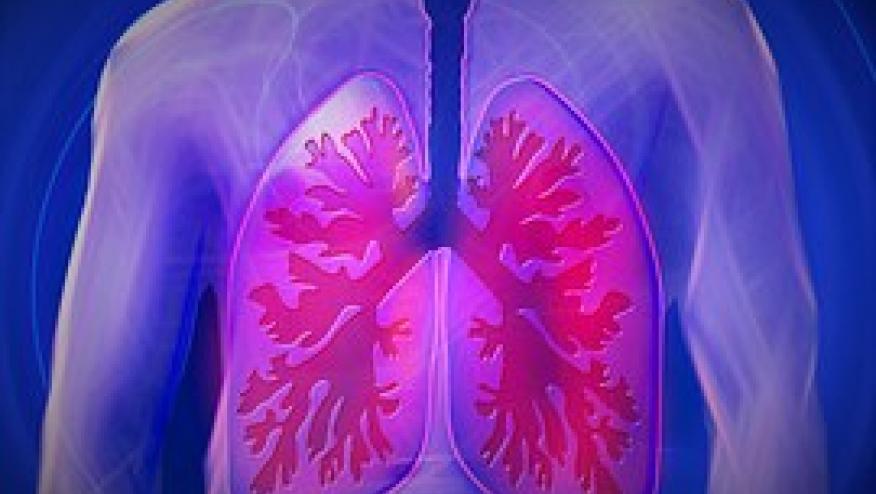Respiratory Burden of RA Save

Over the last few decades, the availability of biologic and targeted synthetic DMARDs has revolutionized the treatment of RA, resulting in improved mortality and lower likelihood of joint deformities and disability. However, lung complications in RA remain a major issue, termed the “respiratory burden of RA.” Respiratory mortality is one of the leading causes of death for people with RA, particularly those with seropositive RA. The major contributors to the respiratory burden of RA include intrinsic lung disease as extra-articular RA manifestations, inhalant injury, and respiratory infection.
RA-ILD is relatively common and increasing in prevalence
Interstitial lung disease (ILD) is one of the most serious extra-articular RA manifestations. Survival after ILD detection is only 3-8 years, and there is a 3-fold increased risk of mortality compared to RA patients without ILD. A recent meta-analysis found the pooled prevalence of ILD in RA to be 11%. About 1 in 8 patients with RA will develop ILD within 20 years of RA diagnosis. Up to 30% of patients may have subclinical RA-ILD. Considering that RA is one of the most common systemic rheumatic diseases, the absolute number of patients with RA-ILD is likely high.
Unlike most outcomes in RA, prevalence of ILD seems to be increasing. The reasons for this are likely multifactorial, related to increased awareness, improved access to advanced chest imaging, higher survival from other causes of death, improved articular treatment that may unmask dyspnea symptoms, or extrinsic factors such as infection or treatment. Recent research has elucidated many ILD risk factors, including autoantibodies, articular disease activity, and genetics such as the MUC5B promoter variant. Unlike other rheumatic diseases, usual interstitial pneumonia (UIP) is the most common ILD subtype followed by non-specific interstitial pneumonia (NSIP). UIP is characterized by progressive fibrosis, while NSIP is generally more inflammatory but can also have fibrotic features. While antifibrotics are now available, these have mostly been studied in patients with other types of ILD and have unclear benefit on quality of life and mortality in RA patients with high rates of side effects. The risks and benefits of most DMARDs for ILD risk and progression remain unclear and should be a high research priority.
Other RA lung manifestations: Bronchiectasis, airways disease, pleural disease, and nodules
While RA-ILD has the most recognition, other RA lung manifestations can also be serious. Bronchiectasis can cause chronic cough and sputum production, impacting quality of life. Patients with RA and bronchiectasis may be prone to severe and/or chronic respiratory infections and increased mortality. Some patients may develop non-tuberculous mycobacterial (NTBM) infection. Conversely, NTBM may cause damage in airways that resembles bronchiectasis. Patients with RA-ILD can have architectural distortion of pulmonary parenchyma that causes traction bronchiectasis. Rheumatologists need to be cautious with immunosuppression in patients with bronchiectasis due to risk of infection.
Airways disease in RA has also grown in recognition due to the mucosal origins paradigm of RA pathogenesis, which posits that immune tolerance loss and autoimmunity may be initiated locally in mucosa such as airways years before patients develop joint symptoms of RA. Asthma and COPD may also be risk factors for RA. Patients with RA also have higher risk of developing these diseases later independent of smoking, suggesting a bidirectional relationship and shared risk factors such as genetics or immune pathways. This seems to be independent of smoking exposure, suggesting that these may be previously underappreciated manifestations of RA.
While less common than ILD and bronchiectasis, some patients with RA may have pleural disease as an extra-articular manifestation. Rarely, these patients may develop large volume pleural effusions that may require drainage or surgical intervention. The optimal medical treatment for this RA manifestation is currently unclear.
Pulmonary nodules are more common in RA than the general population. These may have similar histologic features as cutaneous rheumatoid nodules. However, these may require monitoring for development of lung cancer.
Smoking, inhalants, and respiratory infections
Beyond intrinsic lung disease, extrinsic factors also contribute to the respiratory burden of RA. Smoking is a well-established risk factor for seropositive RA, and recent research suggests that pollutants and occupational inhalants are also associated with RA risk. Of course, all these inhalants also contribute to lung diseases. Patients with RA are also prone to respiratory infections due to altered immunity and immunosuppression from DMARDs and glucocorticoids. Some patients with RA and pneumonia may develop irreversible lung damage. The COVID-19 pandemic has already taught us lessons about susceptibility and severity for acute infection outcomes RA patients. For example, patients with RA-ILD and those treated with rituximab are at high risk for severe COVID-19. Research is ongoing to investigate whether there may also be long-term lung effects induced by COVID-19 in RA, even in patients who may have had relatively mild acute course. Some studies suggest a modest increased risk for incident RA after COVID-19. Other respiratory viruses, such as influenza, may also contribute to lung damage in RA, but more research is needed.
Research opportunities to elucidate the respiratory burden of RA
Taken together, the prevalence of any of these lung manifestations may be quite high but currently the exact figure is unclear. Presence and severity of lung disease in RA likely affects the choice and tolerability of DMARDs. Establishing the risks and benefits of screening for lung disease in RA subgroups such as men or smokers is needed. Trials are needed to define the risks and benefits of specific DMARDs on lung disease risk and progression. Prospective, longitudinal research studies are ongoing to understand the prevalence and natural history of lung manifestations of RA. Our group at Brigham and Women’s Hospital, along with Massachusetts General Hospital, University of Michigan, University of Colorado, and University of Nebraska is currently conducting the NIH-funded Study of Inflammatory Arthritis in Early RA (SAIL-RA) to examine lung health in patients with early RA. This and other studies will help to elucidate the natural history and clinical utility of screening, and identify biomarkers and risk factors for risk and progression to mitigate the respiratory burden of RA.









If you are a health practitioner, you may Login/Register to comment.
Due to the nature of these comment forums, only health practitioners are allowed to comment at this time.